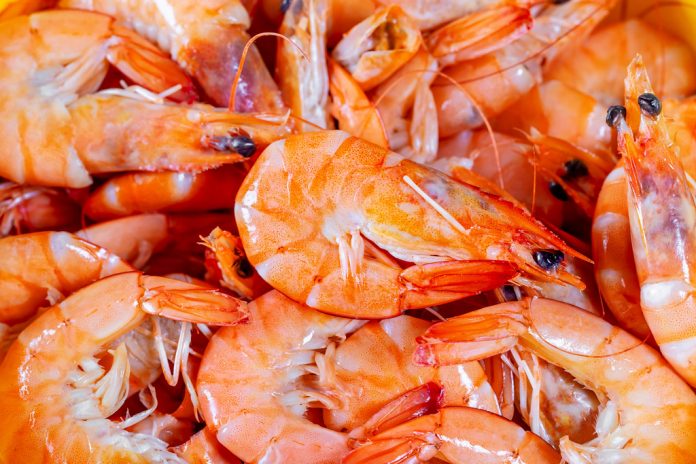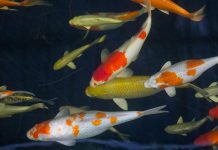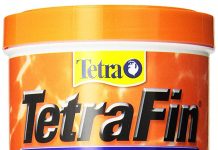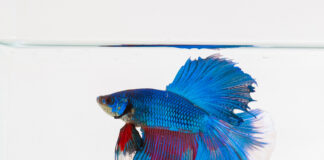What Do Shrimps Eat?
The fact that there are hundreds of species of freshwater shrimps out there may seem a daunting task for the aquarist who plans to add one or several of these aquatic crustaceans to their enclosed reefs.
Many would then rightly wonder how they will take care of these various invertebrates, most notably the diets will be ideal for healthy freshwater shrimps.
You might also be wondering: what do freshwater shrimps eat? Apparently, it’s a relatively simple question with a not-so-simple answer.
In this article, we’ll see how it can be quite simple to feed your shrimp pets but also how in depth their diets can be with the right background on their species.
What Do Freshwater Shrimps Eat?
If you’re in dire and immediate need to feed your shrimp or on your way, if not already at the fish store or supermarket to get food, then there is a quick go-to answer to the freshwater shrimp’s diet.
Quick Answer:
First of all, don’t panic. If you’ve gone, bought, and acclimated a freshwater shrimp but you’ve forgotten to get some decent shrimp food, then you can relax.
Shrimp are omnivorous scavengers that will feed on any food type that is small enough for them to eat. Hence, those fish flakes or fish pellets you may already have will be okay.
Consider breaking them down into more bite-size pieces for your shrimp. Being scavengers, your shrimp may already feed on food otherwise not eaten by your other aquarium inhabitants.
Alternatively, you can feed freshwater shrimp frozen kale or collard greens just remember to chop and mince these vegetables before feeding your small crustaceans.
Another reason why you shouldn’t worry is that many freshwater shrimp families love to eat algae and biofilm.
So, in mature and cycled aquariums, which are usually not lacking for algae, food sources for your shrimp will be in abundance. Additionally, these algae-lovers will help keep your tank neat and clean.
What Do Freshwater Shrimps Eat?
Long Answer:
Although the freshwater shrimp in your aquarium will indeed survive with the bare essentials, that is, regular fish food, algae, and similar minutely-sized food, they will need specialized food for optimal health,color, and longevity.
This point is especially valid when you will be rearing larval or immature shrimp.
Specialized shrimp feed means you will take into account your shrimp’s species since this will usually dictate the type of food that will help them thrive.
Best foods for Shrimps
1. Algae
We are putting Algae at the top because they make up the majority of Shrimps’ diet. Shrimps can eat Algae all day and night and just can’t get enough of it.
This is the reason why we put the Shrimps into a mature aquarium that already contains lots of Algae. Shrimps can be called a great cleanup crew that has a wide reach to different tiny places and holes where others can’t get to.
They swim around the tank and gradually eat all the Algae present there to clean the tank. They are a natural cleaner, aren’t they?
To understand your Shrimps’ condition, observe them as mentioned below and do the suggested tasks.
- ● If your Shrimps are moving satisfied and grazing around the tank, it is a good sign and they are comfortable and looking for more food(Algae).
- To do: In such cases, you should skip a few(2 or 3) days between feedings. This will allow them to swim more and be healthy.
- ● If you observe your Shrimps just sticking to a part of the tank and zipping around it, it means that they have completed their task(i.e eaten up all the Algae) and are looking for some supplementary food.
- To do: Provide some supplementary food regularly for a few days so that they can again be able to run in search of the Algae.
- ● If you observe your Shrimps being not interested in catching Algae and doing too slow motions, you may be feeding them too much.
To do: Skip their feeding between a few days.
2. Fresh Veggies
Fresh Veggies are a perfect supplement when it comes to providing high-rich nutrients and healthy plant-based energy.
The things you can feed your Shrimps as supplements can be Spinach, cucumber, Broccoli, kale, zucchini, sweet potato, carrot, and all the stuff like these that you were told to eat while you were a kid.
Veggies are usually served after a bit of preparation that is very easy. You can simply prepare a bunch in a very short time and then freeze them for later feeding.
We suggest peeling the carrots, sweet potatoes, and cucumbers as Shrimps and Fishes do not like it as a meal. These peels contain pesticides that can be harmful and unhealthy for your Shrimps.
How to prepare the veggies?
First, Slice the veggies for about half an inch(1.25 cm). For broccoli, you can simply break them into small pieces.
Put all the stuff in a pot with boiling water to boil for about 2 minutes.
Also Read: What Do Catfish Like To Eat: 7 Proven Baits
After that, put them out quickly(with your safety) from the pot and re-put them in a container containing ice and ice water in order to stop the boiling process.
Why boiling and freezing?
Doing these processes(boiling and freezing) the veggies breaks them completely making them soft and suitable for your Shrimps intake.
This also makes them sink to the bottom of the tank so that they are not floating all over the tank spoiling the beauty and appearance of your tank.
When to feed the Shrimps with veggies?
It’s not a big deal to feed your shrimps several times a day with the veggies. We also suggest putting some pieces of the prepared veggies in the night and put out the remaining the next morning.
3. Leaf litter
You heard it right, Leaves can also be a great source to provide healthy supplements for your Shrimps.
Spreading leaves in your tank creates a natural friendly environment for your Shrimps as the leaves fall into rivers floating everywhere.
After spreading the leaves, a group of harmless bacteria known as Infusoria and other microorganisms will start growing on the leaves after its breakdown. And yup, Shrimps truly love this stuff and can eat them the whole day.
How to feed them with leaves?
Try to collect fresh and clean leaves from your area. Check if they haven’t been exposed to things like pesticides or chemical fertilizers.
The other way to get fresh leaves is to buy the Indian almond leaves that are also known as Catappa leaves.
An Indian almonds leaf is a very large leaf that has a wide surface area for the shrimps to graze food and to hide under. The leaves also stick to tannins and flavonoids that contain anti-inflammatory and antimicrobial properties.
4. Cuttlefish bone
You got it right, Cuttlefish bones are also a desired meal for the Shrimps.
You can find Dried Cuttlefish bones in the bird section at pet shops. Cuttlebones are broken into small pieces and then thrown in the tank to feed the Shrimps.
At first, they’ll be lightweight but after some days, they’ll automatically sink to the bottom.
Why cuttlebone?
Cuttlebones are formed purely of calcium carbonate but still, they are soft. So, when the shrimps move around it grazing, it will give them dietary calcium that is very essential for shell growth.
5. Homemade food
If you want to be sure of what is being fed to the shrimps, then you should think of preparing homemade food for your shrimps yourself.
You can find hundreds of recipes for Shrimp food on google and prepare them(it may take some time) and then, you can freeze them for later feeding.
So, let’s take a gander at the freshwater shrimp’s background.
Shrimp Family Tree
All freshwater shrimp fall under the infraorder Caridea. Within this infraorder are the Atyidae and Palaemonidae families, from which you’ll find the most common and most popular species of freshwater shrimp, especially in the context of aquaria.
Atyidae
Typically, the species you will encounter in your local or online fish and aquarium hobby stores are the shrimp species Caridina, Atya, Halocaridina, Neocaridina, Paratya, all under the Atyidae family. There are, of course, many more shrimp species in the Atyidae family. The species above, though, are the most readily available.
Palaemonidae
Under the Palaemonidae family, you’ll find another favorite fish species: macrobrachium. Many identify this species of shrimp by their long and enlarged claws when compared to those on Atyid shrimp.
Diet Requirements For Shrimp
Now that we’re familiar with the some of the famous shrimp species, we can take a look at how their diets categorize them into three groups: substrate scrapers, filter feeders, and the meat eaters.
Substrate Scrapers
If you already have shrimp dwellers in your aquarium, chances are they’re a part of this group. Substrate scrapers include the most common shrimp species on the market such as the Cardina and Neocardina varieties.
Substrate scrapers are the easiest to feed since they are the least finicky with food. These species are very active as they roam the aquarium in search of food. Food sources will come from algae, otherwise uneaten fish food or flakes, microorganisms, and biofilm. This diet would then include the cleaner shrimp whose claws are suited for grazing matter on your substrate, and along aquarium walls.
Despite their tolerant nature with food, you would still want to use specialized shrimp food as well as a good supplementation of vegetables such as boiled spinach and broccoli. A healthy and balanced diet will ensure your shrimp’s color is at its most intense.
Popular substrate scrapers:
- Red Cherry Shrimp (Neocaridina denticulata sinensis “red”)
- Crystal Red Shrimp (Caridina sp. “Crystal Red”)
- Amano Shrimp (Caridina japonica)
Filter Feeders
Filter feeders rely on water current to acquire food. With their specialized claws, filter feeders strain very fine particles of food such as uneaten food or fine plant debris,
micro-algae, and other plankton-sized material in the water. This diet is why you’ll often find filter feeders facing the water current in your aquarium.
Again, for optimal health, you can consider supplementing a filter feeder’s diet with finely ground algae wafers. If you have a filter feeder in your tank, always ensure a consistent movement of water via an airhead or other apparatus.
Popular filter feeders:
- Bamboo/wood Shrimp (Atyopsis moluccensis)
- Vampire Shrimp (Atya gabonensis)
- Caribbean Dwarf Filter Shrimp (Micratya poeyi)
Meat Eaters
Lastly, we have the meat eaters in the freshwater shrimp world. Despite their name, you should probably hold off on the bacon and burger bits.
The reason for the name is that these species of shrimp typically feed on bigger and meatier matter and detritus in the water.
Hence, pellets, flakes, and larger pieces of vegetables and other food supplement will be ideal for these type of shrimp. Additionally, you’ll also see this kind of shrimp feeding on string and hair algae.
You’ll quickly recognize a meat eater since they’re larger than other shrimp with pronounced or elongated claws that are suited for their meaty diet.
In fact, you should take care your meat eater, often from the macrobrachium species, get so large that they try to eat the small fish in your tank.
Popular meat eaters:
- Pearl/Sand Shrimp (Arochnochium kulsiense)
- Red Claw Macro (Macrobrachium sp.)
- Fuzzy claw macro (Macrobrachium eriocheirum
Feeding the Crustacean
Yes, your omnivorous freshwater shrimp can typically survive on just about anything if you place it in a mature and cycled aquarium. In addition to the food particles, algae, and microorganisms already present in the tank, fish food and pellets will be adequate.
However, for the healthiest and most colorful shrimp, you’ll also want to use specialized shrimp food and vegetable supplements.
Conclusion
Shrimps are small aquatic living organisms that prefer to live in freshwater. They are preserved in marine tanks or aquariums as a showcase or for selling.
In this guide, we have mentioned all the best meals that will keep your Shrimps healthy and active.
>>> Read More:
- 10 Of The Best Goldfish Food In 2017
- How To Find The Best Aquarium Thermometer
- What Is The Best Substrate For Planted Aquarium?
- 10 Of The Best Aquarium Air Pumps In 2017








